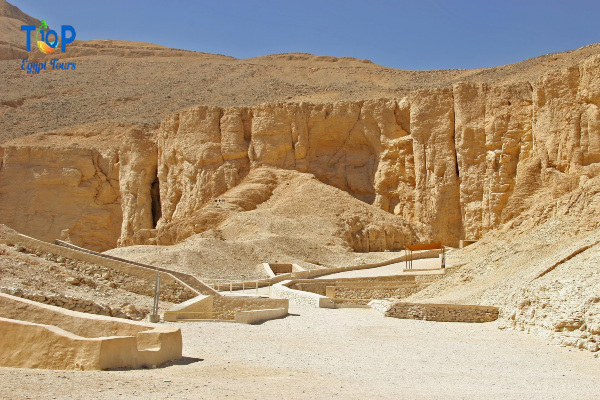Tombs of the Nobles in Luxor, Welcome to the heart of ancient Egypt, where the mystique of the past intertwines with the present. Nestled along the majestic Nile River, Luxor stands as a testament to the grandeur of a bygone era. As we embark on a journey through the sacred mausoleums, we unravel the stories engraved in stone, discovering the final resting places of the noble elite in this captivating city. Join us on this odyssey through history under the overarching theme of “Egyptian Ancient Thebes: Luxor and Karnak Temples.”
Luxor: Gateway to the Afterlife
Luxor, once known as Thebes, served as the political and religious capital of ancient Egypt. Home to an array of monumental structures, Luxor continues to captivate travelers with its temples, obelisks, and the world-famous Valley of the Kings. However, our focus today turns to the often overlooked but equally enchanting Tombs of the Nobles.
Tombs of the Nobles in Luxor:
1. Artistry in Stone:
The Tombs of the Nobles in Luxor boast an exquisite display of artistic prowess. Carved into the hills on the west bank of the Nile, these tombs reveal intricate details of daily life, religious beliefs, and the nobility’s aspirations for the afterlife. The vivid frescoes and hieroglyphs narrate tales of the deceased, creating a tapestry of ancient Egyptian culture.
2. Nobles and Their Stories:
Each tomb in Luxor tells a unique story, shedding light on the lives of the noble class. From Viziers to royal scribes, the tombs are the final abode of those who played pivotal roles in the administration of the Pharaoh’s kingdom. Explore the narratives of people like Userhet, the overseer of the treasury, or Menna, the scribe and overseer of fields.
3. The Valley of the Nobles:
Unlike the grandeur of the Valley of the Kings, the Valley of the Nobles provides an intimate experience. Wander through the labyrinth of tombs, discovering the final resting places of individuals who contributed significantly to the prosperity of ancient Egypt. Marvel at the beautifully preserved decorations that have withstood the sands of time.
Exploring the Tombs:
1. Tomb of Userhat:
Userhat, a royal scribe and judge, invites you to delve into his world. Admire the detailed scenes depicting Userhat and his family engaged in daily activities. The elaborate funeral procession on the tomb’s walls showcases the reverence with which the nobles approached the afterlife.
2. Tomb of Nakht:
Nakht, the astronomer and scribe, presents a celestial journey within his tomb. The intricately painted ceiling unfolds a cosmic spectacle, emphasizing the nobility’s connection with the divine. Nakht’s tomb is a celestial canvas that transports visitors to the ancient Egyptian cosmos.
3. Tomb of Menna:
Menna, the overseer of fields, offers a glimpse into agricultural life in ancient Egypt. The vibrant depictions of harvest scenes and daily chores highlight the nobles’ appreciation for the fertile land of the Nile. Menna’s tomb is a celebration of life, both earthly and eternal.
In the shadow of Luxor’s grand temples, the Tombs of the Nobles stand as silent witnesses to a glorious past. As you explore these sacred mausoleums, the stories etched in stone come to life, connecting you with the noble class of ancient Egypt. Let the whispers of the past guide you through the hallowed halls, and may the spirits of the nobles accompany you on this unforgettable journey through Egyptian Ancient Thebes.



Comment (0)